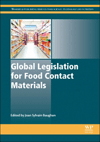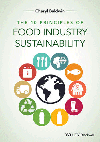Using traceability to protect supply chain integrity
Instituting a voluntary standardized traceability program is an important and necessary step.

Back in 1997, the National Conference on Interstate Milk Shipments began making the case for a voluntary dairy food safety program called HACCP (Hazard Analysis and Critical Control Points). This program remains an internationally accepted, science-based system for ensuring food safety controls. At the time, the Pasteurized Milk Ordinance was doing the heavy lifting on dairy safety. HACCP was heralded not as a replacement for the PMO, but rather as another (voluntary) tool used to reinforce quality and customer satisfaction.
Fifteen years later, it’s hard to imagine the dairy industry without HACCP. Now is the time for processors to pursue a similar voluntary standardized program as it pertains to product traceability — one we are sure to find just as integral to our success 15 years from now. When the U.S. dairy industry commits to a voluntary standardized traceability program, it will achieve increased customer confidence both by having a solid traceability plan in place and by knowing that their industry colleagues have instituted such plans in their organizations.
And, frankly, such a traceability program is the new ante. It’s now table stakes — a baseline requirement in this global business environment. We can’t afford to let our competitors, who already have such programs in place and have made them central to their value proposition, capture customers who would otherwise buy U.S. dairy products.
Simply put, this is the cost of doing business today; buyers expect their suppliers to have a rigorous traceability program. Of course, it’s also smart business for us, both for individual companies as well as for the industry as a whole.
The benefits of traceability
Having the entire industry poised to respond to a potential threat to its products means that if your organization is potentially involved in a suspected contamination, you’ll know precisely whether your product was involved and how to remove it, and only that product (not batches and lots surrounding it). If another organization’s product is in question, they will be able to perform a similarly precise removal of product, saving the situation from spiraling out of control and dampening your sales and those of the entire category.
Thus, adopting a voluntary standardized traceability program will send the signal that the industry is serious about quality — helping to ensure customer and consumer confidence in U.S. dairy products.
Most importantly, U.S. processors are in a position to influence how the requirements in the Food Safety Modernization Act are carried out in our industry. FDA officials are currently implementing FSMA, which aims to protect American consumers by expanding federal inspectors’ efforts from that of responding to food contamination outbreaks to also helping to prevent them. As an industry, we have the opportunity to show the FDA and other government officials that dairy is proactively committed to leading traceability practices, and to use this voluntary program as the model for whatever regulations may come to pass. While many companies have traceability systems in place, standardizing these practices will help meet the FSMA requirements. In short, the time to act is now.
That’s why the dairy producer-funded Innovation Center for U.S. Dairy is collaborating with industry members on a pilot study to define traceability best practices for the industry as a whole. This study is a collaborative exploration of a traceability pilot program. The pilot program comprises simply the best practices in terms of traceability based on an analytic process of benchmarking competition conducted by active dairy industry quality assurance professionals. The Innovation Center expects the program to be rolled out in the first quarter of next year.
I invite you to join me and the study participants in anticipating the positive changes this process will have on our competitiveness, both domestically and abroad.
Looking for a reprint of this article?
From high-res PDFs to custom plaques, order your copy today!







